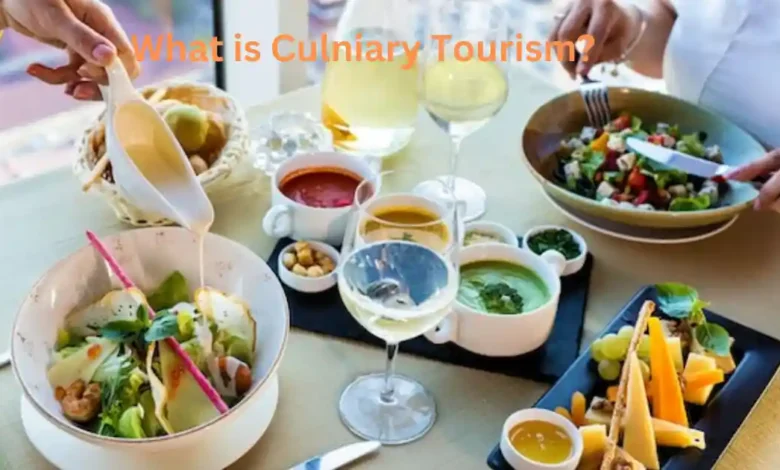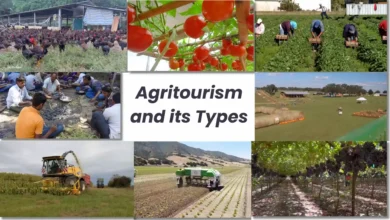
What is Culinary Tourism?
Gastronomy tourism and culinary tourism are two terms used to describe the same thing – an experience that goes beyond typical sightseeing. It’s about savoring a region’s flavors, immersing oneself in its cuisine culture, and learning about the narrative each dish conveys.
In this article, we’ll look at the world of culinary tourism, its importance in the travel industry, and how locations may effectively promote their unique cuisine experiences in order to capture travelers’ taste buds and hearts.
Culinary Tourism
Culinary tourism is a form of travel and tourism called culinary tourism, also referred to as food tourism or gastronomy tourism, which focuses on experiencing and learning about the culinary customs, food culture, and regional cuisine of a certain region or destination. It entails traveling to various locations to taste the regional cuisine, ingredients, cooking methods, and culinary experiences firsthand.
How Do You Promote Culinary Tourism?
Promoting culinary tourism entails highlighting a place’s distinctive food culture and culinary experiences to draw tourists who are eager to learn about a place through its cuisine. Here are some methods for promoting culinary travel.
Culinary Events and Festivals
- Create events with a food theme, such as food festivals and competitions, to showcase regional cuisine and ingredients.
- To draw a larger audience, invite well-known chefs and food influencers to participate.
Food Tours and Classes
- Organize guided food excursions that take guests to local eateries, street food stands, and marketplaces so they can sample the cuisine.
- Organize cooking demonstrations with local chefs so that tourists can learn how to make regional cuisine.
Food Trails and Maps
- Create culinary maps or trails that lead tourists to iconic eateries, food markets, and culinary hotspots in the area.
- Develop mobile apps or websites with interactive maps and reviews for easy navigation.
Farm-to-Table Experiences
- Encourage tourist participation in harvesting, education on local foods, and farm-to-table dining experiences.
- Showcase restaurants that have an emphasis on sustainable and locally produced ingredients.
Culinary Museums and Exhibits
- Create culinary museums or exhibits that highlight the history, culture, and evolution of regional cuisine.
- In order to engage guests, use interactive components and tastings.
Trails of Food and Beverage
- Create wine, beer, or spirits trails that feature local brewers, wineries, and distilleries.
- Provide tastings, tours, and chances to meet the artisans.
Food Promotion and Marketing
- Collaborate with local food producers, restaurants, and food-related companies to cooperatively market culinary tourism.
- Share mouthwatering photographs and anecdotes about local delicacies on social media, blogs, and food-focused websites.
Calendar of Culinary Events
- Maintain an annual schedule of culinary events and festivals to assist tourists in planning their visits.
- Make certain that these events cater to a wide range of likes and preferences.
Food Tourism Collaborations
- Work with travel companies, hotels, and airlines to create culinary-themed packages and promotions.
- Give tourists who prefer culinary tourism packages discounts or exclusive experiences.
Education in Culinary Tourism
- Educate residents and visitors about the history, customs, and significance of regional foods.
- Encourage restaurants to include information on their menus regarding the origin and production of meals.
Food Souvenirs and Products
- Promote local food souvenirs and products that travelers can take home, such as spices, sauces, or unique ingredients.
- Create culinary-themed food markets or souvenir shops.
Working with Food Bloggers and Influencers
- Invite food bloggers, vloggers, and social media influencers to visit your location and chronicle their gastronomic experiences.
- Their material has the ability to reach a larger audience and influence future visitors.
Safety and Hygiene Requirements
- To preserve a great reputation and attract more guests, ensure that all culinary enterprises fulfill rigorous safety and hygiene requirements.
Feedback and Improvement
- Gather tourist feedback and use it to continuously improve the culinary tourism experience.
- Adapt to changing cuisine trends and preferences to keep your offers intriguing and fresh.
Role of Culinary Tourism
Culinary tourism is important in the travel and tourism sector because it incorporates the exploration of food and beverages as a fundamental aspect of the trip experience. This is also known as culinary tourism or food tourism. The role of culinary tourism can be understood in different ways.
Cultural Exchange
Culinary tourism allows visitors to immerse themselves in a destination’s local culture through its food. Food is an important part of culture, and eating local meals and beverages can reveal insights into the traditions, history, and values of a particular region or group.
Economic Impact
Culinary tourism can benefit destinations’ economies. It encourages local businesses such as restaurants, food markets, and food producers, thereby creating jobs and bolstering the local economy. It can also extend the tourism season, reducing reliance on seasonal visitors.
Destination Differentiation
Culinary tourism may distinguish a resort from others by providing distinctive and authentic gastronomic experiences. This can help a resort stand out in a competitive market by attracting a niche audience of travelers who are specifically interested in food and beverages.
Community Engagement
It frequently involves interaction with local communities, such as farm trips, culinary courses, and dining in family-owned eateries. This interaction can foster a sense of genuineness and a stronger connection with the destination.
Education and Learning
Culinary tourism may be a learning experience, allowing travelers to obtain new culinary skills, knowledge about food production processes, and a deeper awareness of diverse cuisines and culinary traditions.
Sustainable Practices
Many culinary tourism efforts encourage sustainability by focusing on locally produced and seasonal products, decreasing food waste, and promoting sustainable farming and fishing practices. This coincides with the growing interest in responsible and sustainable travel.
Promotion of Culinary Heritage
Culinary tourism can help conserve and promote a destination’s culinary legacy by showcasing traditional recipes, cooking methods, and indigenous ingredients. This can be a source of pride for local communities and help pass down culinary traditions to future generations.
Marketing and Tourism Promotion
Culinary tourism may be a very effective marketing technique for places. Food festivals, food tours, and culinary events may generate media interest and attract tourists and food enthusiasts.
Greater Revenue.
Culinary tourism can raise revenue not only for restaurants but also for other connected businesses such as wineries, breweries, food producers, and local artists, who can all profit from greater exposure and sales.
Diversification of Tourism Offers
For regions that rely largely on traditional attractions, culinary tourism can help to diversify their tourism offers and attract a wider spectrum of visitors.
Conclusion
Culinary tourism is a delectable excursion that improves our trips by bringing us into contact with local cultures through the universal language of food. Because of its impact on local economies, cultural exchange, and sustainability practices, it is a great asset for both travelers and destinations. As culinary tourism evolves, it provides a tantalizing world of opportunity for individuals looking to explore, taste, and learn while traveling. So, the next time you plan a journey, think about enjoying your destination’s gastronomic charms; you might just uncover the most delectable memories of your travels.
You may like:




